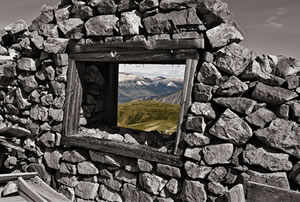
The American Recovery and Reinvestment Act is making tax credits available for various home improvements, and allows 30% of all your certified installations up to $1,500. With that in mind, it could be helpful to get in depth on what to look for when considering windows.
In replacing windows or reconditioning them, there are a few key terms to know before proceeding;
- U-Factor – This is a measure of the heat loss through a material or assembly. The lower the U-factor, the more the window is resistant to heat loss. The U-factor will apply for the entire unit.
- Solar Heat Gain Coefficient (SHGC) – This is the fraction of solar radiation admitted through a window system out of the available heat that can make it through the product. For example an SHGC rating of .6 means that 60% of the available heat can make it through the window. This also holds that the lower the number, the more efficient the product is at holding heat back.
- R-Value – This is a measure of how insulated something is. The standard for walls in homes is an R-value of 19, which is substantial, but still a bit insufficient. Single paned windows, by comparison, are a 1. This means that, in the winter, heat flows out of your home as if there was nothing there at all.
- Sash – This is the portion of the window that houses the glass. It is typically the movable windows in a window unit. The frame is the fixed outer portion at a window that holds the Sash. And the Storm Window is a separate exterior window typically designed for installation over a double hung window unit.
- Insulating Glass Unit – A unit consisting of two or more layers of glass separated by a spacer.
When considering retrofitting or replacing existing windows, there are a few questions to ask before beginning. These questions are as follows: What is the existing system and how well does it perform? How is the proposed system expected to perform? Will there be significant energy savings? Will comfort, condensation, fading, and noise problems be improved?
Deciding which windows are best for you can be tricky, but in the following bit will be the insulation comparisons between different window unit options. It gets a little complicated, but it can be best broken down explaining the related indoor temperature of the glass versus an outside glass temperature of 0 degrees Fahrenheit.
If your room is at around 70 degrees, the temperature of the inside glass will be only 16 degrees for a single paned, unimproved window unit (R-Value of 1). With a single pane and exterior storm window the inside temperature is heightened to 44 degrees. For a single pane window with interior film (that increases the r-value) the temperature is again at 44 degrees, but when used in combination with a storm window, the inside temperature of the glass increases to 53 degrees.
Double paned windows will help to save your indoor heat, especially when the air between the panes is replaced by a gas such as argon, which will insulate the home better, causing the indoor glass temperature to rest at around 55 degrees. You could also add a storm window to the outside of this configuration, lowering heat gain/loss depending on the season.
The options for placing windows can be varied, and will mostly depend on what system will be replacing the existing system. It is important to assure that the upgrade in windows will result in significant energy savings, or the work and planning will have been for naught. Of course the examples above are pretty simplistic, as the U-factor or the SHGC numbers are wholly ignored but the point remains; when shopping for windows make sure that you get the best system that fits in your house and also fits in your budget.
There are also options for cold climates and a variety of ways to improve window thermal performance beyond that provided by the single pane windows, or even the more substantial double paned versions. Each of the following alternatives fill specific needs and homeowners must weigh the advantages and disadvantages of each of the several following options, which incorporate low emissivity glass, which increases a windows R-value.
Consider installing interior treatments for the windows, like low-e film to decrease heat loss, but also consider blind shades, and heavy duty quilt curtains to draw close at night. Honeycomb shades are great for decreasing heat loss. Exterior storm sash’s can also help, especially with the low e glass. If you have a sash kit already, consider getting a new one. There are plenty of options and directions to go when upgrading windows, but be sure to talk with a professional before taking the plunge with a new set of frames for your house. But remember, even a double paned window with argon gas in the spacer, the r-value is only increased to about 3, so you will need to employ multiple strategies to combat winter heat loss and summer heat gain.
GREENandSAVE.com is a free resource for anyone that wants to save energy, money, and the environment. The articles, product reviews, online tools, and return on investment calculations are researched from a diverse range of public and private sector sources. Overall, the company is passionate about saving money as well as creating healthy homes, offices, and lifestyles.
For more information on the potential payback from a new window unit, check out GREENandSAVE’s Return on Investment Table, which will be a valuable tool in any new Home Remodeling project.

